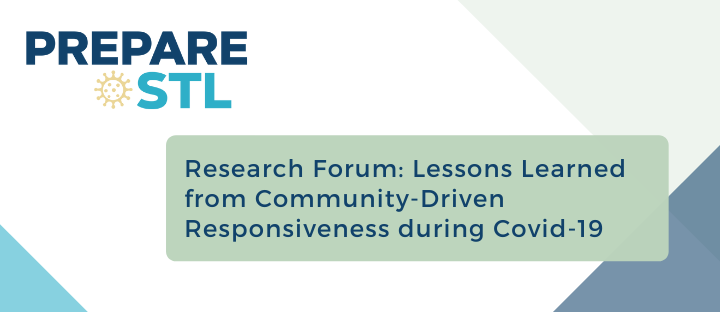COVID-19 has disproportionately impacted people of color, and they are “suffering and dying from COVID-19 at greater rates than the general population.”1 Underserved communities continue to be ignored by population-level health interventions, worsening health disparities. In an effort to reach communities of color in St. Louis, PrepareSTL, a “collaborative, community-led campaign” aims to assist these communities with “accessible information and resources to stop the spread of the coronavirus among the target audiences and help these communities survive the virus’ adverse social and economic impacts.”1
The PrepareSTL campaign is the result of a collaborative effort of the City of St. Louis Health Department and St. Louis County Department of Public Health, together with the St. Louis Regional Health Commission, St. Louis Integrated Health Network, St. Louis Community Health Worker Coalition, Alive and Well Communities, and the St. Louis Mental Health Board.1
PrepareSTL built community outreach infrastructure to address ongoing needs and racial disparities. The campaign’s unique management approach built a network of organizations and individuals, rooted in trust and genuine care.
“Lessons Learned from Community-Driven Responsiveness during Covid-19″, a research study on the success of PrepareSTL which has been published in the Saint Louis University School of Law’s Journal of Health Law & Policy, identifies PrepareSTL’s best practices and unique characteristics as a community-centered response to COVID-19. Specifically, the study describes communication and management strategies that establish an innovative model of equity-centered, community-driven public health outreach.
“Through a combination of content and narrative analysis, the research team identified several key strategies that led to the success of the campaign. These methods included pairing broad media messaging with personal outreach, engaging community champions as campaign messengers, centering relationships and trusting Black and Brown leadership at all campaign levels, and creating a highly responsive, community-driven management structure. Combined, these factors allowed the campaign to not only respond to urgent COVID-19-related needs, but also to build community outreach infrastructure to address ongoing needs for communities of color in the St. Louis region.”1
One community organizer shared: “This has been an opportunity to be able to learn how those tables work. To be able to sit down and be around powerful people, with powerful voices, who make impacts in ways that I’m just learning how to do….These decisions affect the people that I live with and care for. It has been a transition.”
Another community leader stated, “It encourages me to want to go out, and do more education, community health education, and kind of go from there.”
Citations:
- Amanda Harris, Brittini “Ree Belle” Gray, Ciearra Walker & Melinique W. Castellanos, Lessons Learned from Community-Driven Responsiveness During COVID-19, 14 St. Louis U. J. Health L. & Pol’y (2021).
Available at: https://scholarship.law.slu.edu/jhlp/vol14/iss2/11


I was able to watch some of the presentation on my phone yesterday limited by my poor connection. But what I heard confirms everything I know and trust about the current RHC leadership and staff. You know what is right to do, and you do it. I continue to be so impressed by your work.